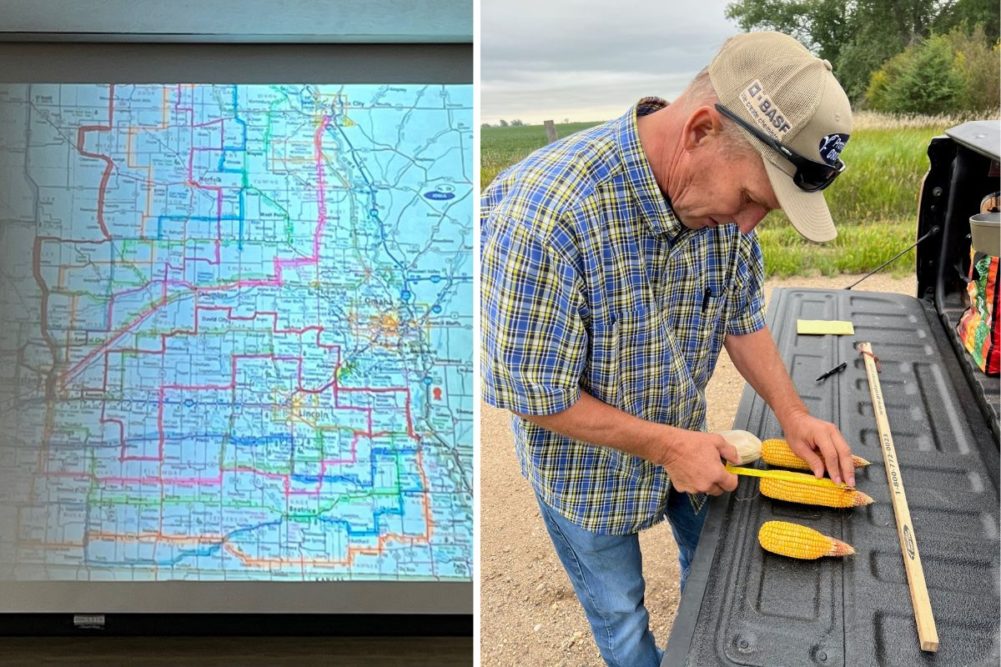GRAND ISLAND, NEBRASKA, US — Two groups of scouts on opposite sides of the US Corn Belt set out early Monday to assess the corn and soybean crops of South Dakota and Ohio on the first day of the three-day Pro Farmer Midwest crop tour. Scouts on the western side relished a morning of overcast skies and mild temperatures before the blazing mid-afternoon sun had temperatures rising into triple digit territory.
“This is the crispiest dryland we’ve ever run into,” said Chip Flory, editorial director for Pro Farmer Farm Journal Media. “The heat this week is really going to hurt the dryland stuff.”
But the preliminary corn yields and soybean pod estimates on the first day were not discouraging. In South Dakota, the scouts’ aggregated yield was 157.42 bushels per acre, up nearly 33% compared with last year’s estimate and up 5.2% from the tour’s three-year average of 149.71 bushels per acre for the state.
Scouts in South Dakota noted broad variability between fields and even within fields. One row of corn, for instance, had stalks with ears over eight inches in length while nearby stalks carried ears that were barely half that size. Most stalks had decent height with a healthy green canopy, but their lower tier leaves were brown and shriveled, and several leaves exhibited signs of hail damage. Some of the sample ears also indicated pollination issues related to heat stress.
“It’s not the best corn crop we’ve ever seen in South Dakota, but it is better than what it was a year ago, but it needs water,” Flory said.
And while the US Department of Agriculture in its weekly Crop Progress report rated the South Dakota corn crop 71% good-to-excellent as of Aug. 20, most on the tour expected that number to decline in the next report.
The soybean crops in South Dakota presented a similar situation. Most scouts said the crop was better than expected and showed little evidence of disease, but insect pressure was well present. Scouts noted a spray of leaping grasshoppers as they entered most soybean fields to take assessments. The crop also needed moisture. Most plants had ceased flowering, but the pods were flat and dry.
“These crops need a rain within the next 10 days to plump up or they’ll be heading to the pasture,” said Leon Dorn, a Nebraska farmer and one of the western leg crop tour scouts.
First day tour results for soybeans in South Dakota estimated 1,013 pods within a three-foot-by-three-foot square, up 16% from 2022 but down 2.6% from the tour’s three-day average for the state.
Scouts on the western tour loop concluded their day in Grand Island, Nebraska, US, while scouts on the eastern side ended in Noblesville, Indiana, US. Each group will explore the fields in these states, making their way to Nebraska City, Nebraska, US, and Bloomington, Illinois, US, respectively, on Tuesday.





